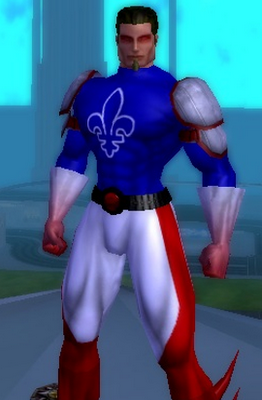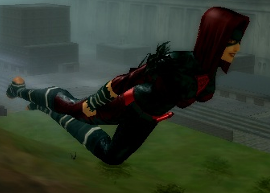
I am not normally a superstitious person. I have no problem with black cats, my only concern about broken mirrors and walking under ladders have to do with safety, and I have never ever felt a pressing need to throw salt over my shoulder. I am also however a baseball fan, and baseball is known for its superstitions. So I find myself wanting to talk baseball, but fearing to do so because this is post number 13. This same fear and superstition is the main reason I haven’t posted anything about baseball yet in this blog. I’ve been wanting to, but it seemed like every time I’d start thinking seriously about making a baseball post in general, and a post in particular about a certain local professional baseball team, something bad would happen to that local professional baseball team. Nor can I discount my irrational fear that should I mention how good this local professional baseball team was doing, especially given their rather dismal start to the season, that they would instantly stop performing in such an excellent and unexpected manner.
So I remained quiet on the matter. Now Sunday the regular season ended, an event which I view with mixed feelings every year, on the one hand in means baseball will soon be over for the year, and on the other it means post-season goodness. I was prepared to risk angering the baseball gods, and actually make a post giving my thoughts on the coming post-season especially about that aforementioned local professional baseball team, but as I sat down to start composing this I noticed this is post number 13 so now you are getting. . . I don’t even know what to call this, but here it is.
I was first introduced to the greatness that is the game of baseball not from the game itself, but from the history of the game. I can thank a board game of all things for this. I unfortunately don’t even remember the proper name for this game. It is something like S.I. All-Time Superstar Baseball. I played it in high school, and it was owned by a classmate of mine, who obtained it from his father, who was likely the original purchaser of the game some time in the mid 1970s. The game was designed to simulate the game of baseball featuring rosters of the all-time greats for each team in the Major Leagues (as of the mid 1970s). Each player would take the role of a manager and select a roster from each teams available all stars. Some teams clearly had a better selection of talent available then others, just think of the guy “unlucky” enough to be managing the New York Yankees. His thought process has to go something like this: “Let’s see I need three outfielders, who do I have that can play outfield? Why I have Babe Ruth, Mickey Mantle, Roger Maris, and Joe DiMaggio. Hmmmm. Oh I know Mantle can also play first base, but wait Lou Gehrig plays first base. Okay I’ll come back to this and select a catcher. Let’s see well this one is easy, Yogi Berra, oh but wait who is this Bill Dickey guy. Well damn. This is harder then I thought.”
I first encountered the game in the early 1990s. Since then I have been (mainly unsuccessfully) trying to find out more information about the game. I believe it was originally published by Sports Illustrated in the mid 1970s as a competitor of baseball simulation games like Strat-o-matic Baseball. It may have been published in conjunction with Avalon Hill, but I suspect it initially was solely a Sports Illustrated undertaking. However in 1978 Avalon Hill did publish a game called Superstar Baseball (pictured above) that used the exact same rules, but instead of featuring complete rosters for each team (the original game I played used a double sided 8" x 11" sheet of paper with the position players on one side, and the pitchers on the other) it contained 96 cards (half American League, and half National League) each representing an individual player from baseball (Avalon Hill also produced a 48 player expansion pack).
The game itself (either version) was played using three nonstandard six sided dice used to generate numbers 10-39. One die determined the tens digit and was numbered 1, 2, 2, 3, 3, and 3; this of course means numbers in the 30s would be rolled 1 in 2 times, while numbers in the teens would only be rolled 1 in 6 times. The other two dice were added together to generate the ones digit. One of those dice was numbered 0, 0, 1, 2, 3, 4, while the other die was numbered 0, 1, 2, 3, 4, 5. This creates an interesting bell curve where 4 and 5 are tied as the most common number being generated, 3 is the next most common, 2 and 6 are tied for the third most common numbers, 1 and 7 are the forth most common, 0 and 8 are the fifth most common, and 9 is the least common number generated. Combine the two sets of dice together and you get numbers between 10 - 39 where 19 is the least common number, 34/35 are the most common numbers, and there is some interesting overlap (24/25 has an equal probability of occurring as 32/36). Each player (as in the members of the team) has a chart using these numbers that is based on their lifetime statistics. The “manager” roles the dice and compares the result to his chosen pitcher’s chart with possible results include a strike out, fly out, ground out, walk, wild pitch, passed ball, or most likely swing away. If the swing away result is reached the other “manager” roles the dice and compares the result to the batter’s chart. The results include the above outs plus home runs, doubles, singles, double play balls, and so on. This is the bare bones of the game; I could go on about how it resolved things like bunting, and stealing bases, but I think you get the picture.
I may never have been able to find a copy of that original game, but I was able to obtain the Avalon Hill version (and the expansion pack). While my version didn’t contain as many players as my classmates, since each player in the game was represented by a card, the game was able to include a brief bio for each of the 96 players it did feature. And from these bios I learned to appreciate the rich history of the game, and from there it wasn’t much of a leap to appreciate the current game. That Ken Burns documentary didn’t hurt either.
I leave you with two pictures of characters from City of Heroes. The first is of a guy I like to call Captain France, but since that name was taken I was forced to name him The Foreign Legionnaire. I am still very happy with how he turned out looking, and if I ever get him to level 20 he will look awesome with a cape. He is a tanker with the primary power of invulnerability, and the secondary power of super strength.

This second picture is an "action" shot of my first ever character Shashu (which is Japanese for Archer). She is a blaster with the primary power of archery. She recently made 14th level and I selected fly as her power. As cool as super speed is, flight just might be even cooler.
No comments:
Post a Comment